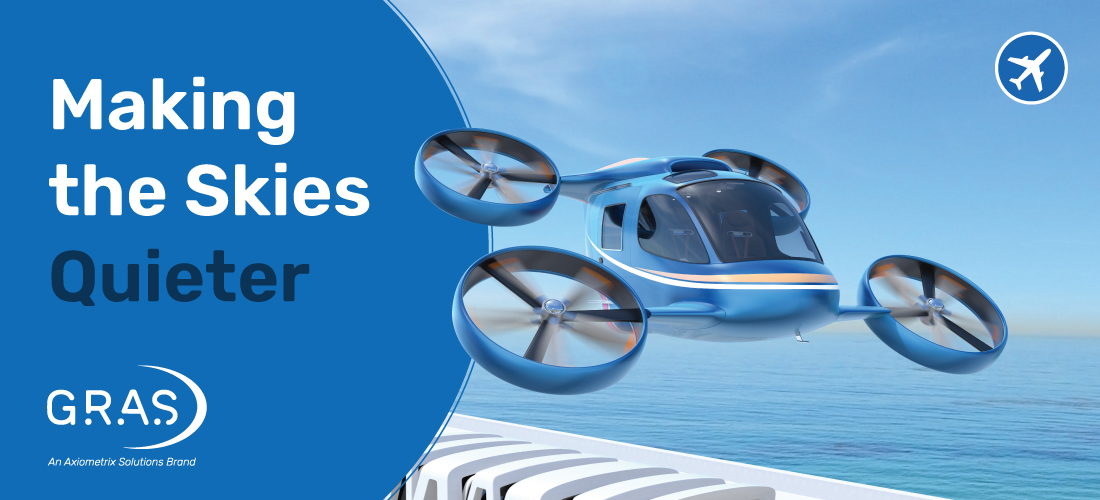As electric vertical take-off and landing (eVTOL) aircraft move from concept to reality, they bring the promise of cleaner, quieter air mobility—especially in urban and suburban areas. From air taxis to regional electric aircraft, the vision is bold—but its success will depend heavily on how these vehicles sound.
Why Noise Matters in eVTOL Development
eVTOLs are intended to operate near homes, schools, hospitals, and workplaces—environments where noise tolerance is low and regulation is high. Compared to helicopters or light aircraft, eVTOLs must achieve substantially quieter operation to gain community acceptance and regulatory approval.
However, achieving that level of acoustic performance is far from simple. Electric propulsion and multi-rotor configurations introduce unique sound characteristics. New tonal harmonics, complex rotor interactions, and reduced engine masking make precision acoustic testing more important than ever.
Acoustic Challenges Across Development Phases
To meet these challenges, engineers need to understand and address acoustic performance at every phase of design and testing:
-
Propulsion System Noise
Rotor and fan noise dominate the external sound signature of most eVTOLs. Analyzing these elements in detail helps engineers tune blade designs, reduce tonal peaks, and improve overall community noise performance.
-
Cabin Noise and Comfort
While electric motors eliminate much of the traditional engine noise, other sources like airflow, structural vibration, and onboard electronics can become more noticeable. Ensuring a quiet, comfortable cabin experience is essential for passenger acceptance.
-
Environmental Noise Compliance
eVTOL operations will be subject to evolving international and local regulations. Accurate outdoor noise measurement—during hover, transition, and cruise—is key to demonstrating compliance and planning safe, acceptable flight paths. Ongoing research efforts, such as NASA’s first published eVTOL acoustic test data, are helping establish reference points and drive industry understanding forward.
The Role of GRAS in eVTOL Testing
At GRAS Sound & Vibration, we work with engineers and researchers across the aerospace industry to support the acoustic goals of next-generation aircraft. Our microphones and measurement solutions are known for their reliability, precision, and ability to perform under demanding conditions.
Rather than treating acoustics as a final certification step, leading eVTOL developers are integrating noise testing early in the design process—when there’s still time to make changes that matter. GRAS equipment plays a vital role in helping teams identify critical noise sources, validate improvements, and move confidently through each development milestone.
Building Trust in the Air Through Better Acoustics
Sound has a direct influence on how people perceive safety, comfort, and innovation. In urban air mobility, a quieter aircraft isn’t just a technical achievement—it’s a public expectation. GRAS is proud to support this transformation by enabling accurate, meaningful acoustic data that drives smarter design and better outcomes.
Explore how GRAS Sound & Vibration products support advanced aerospace testing.









